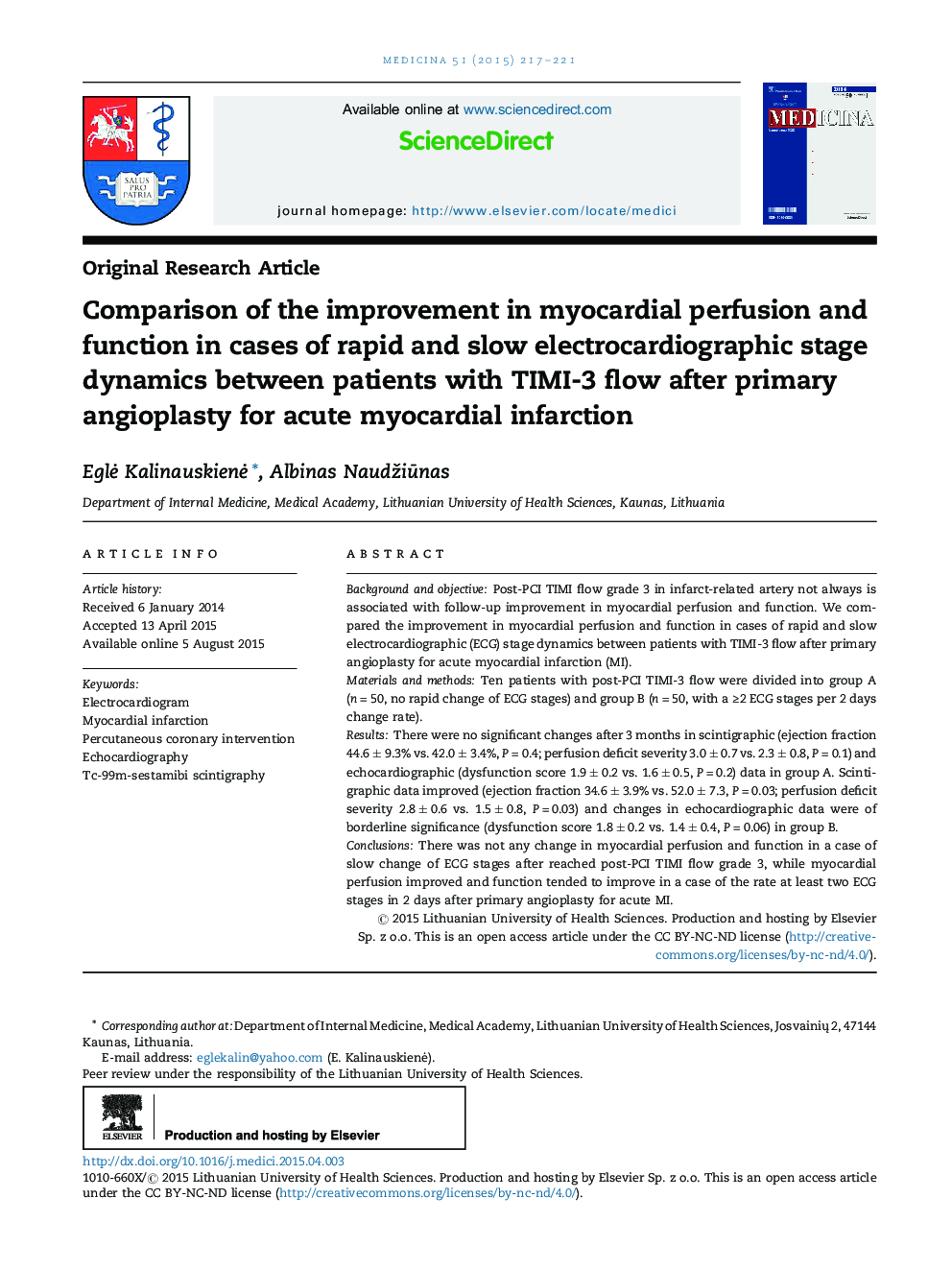| Article ID | Journal | Published Year | Pages | File Type |
|---|---|---|---|---|
| 2680403 | Medicina | 2015 | 5 Pages |
Background and objectivePost-PCI TIMI flow grade 3 in infarct-related artery not always is associated with follow-up improvement in myocardial perfusion and function. We compared the improvement in myocardial perfusion and function in cases of rapid and slow electrocardiographic (ECG) stage dynamics between patients with TIMI-3 flow after primary angioplasty for acute myocardial infarction (MI).Materials and methodsTen patients with post-PCI TIMI-3 flow were divided into group A (n = 50, no rapid change of ECG stages) and group B (n = 50, with a ≥2 ECG stages per 2 days change rate).ResultsThere were no significant changes after 3 months in scintigraphic (ejection fraction 44.6 ± 9.3% vs. 42.0 ± 3.4%, P = 0.4; perfusion deficit severity 3.0 ± 0.7 vs. 2.3 ± 0.8, P = 0.1) and echocardiographic (dysfunction score 1.9 ± 0.2 vs. 1.6 ± 0.5, P = 0.2) data in group A. Scintigraphic data improved (ejection fraction 34.6 ± 3.9% vs. 52.0 ± 7.3, P = 0.03; perfusion deficit severity 2.8 ± 0.6 vs. 1.5 ± 0.8, P = 0.03) and changes in echocardiographic data were of borderline significance (dysfunction score 1.8 ± 0.2 vs. 1.4 ± 0.4, P = 0.06) in group B.ConclusionsThere was not any change in myocardial perfusion and function in a case of slow change of ECG stages after reached post-PCI TIMI flow grade 3, while myocardial perfusion improved and function tended to improve in a case of the rate at least two ECG stages in 2 days after primary angioplasty for acute MI.
